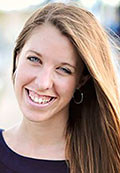To prioritize social media, recruit your newsroom's digital natives as cheerleaders
In an age when news frequently breaks across any number of social platforms, you would be hard pressed to find a journalist who denies social media's impact in shaping the digital news industry. Still, acknowledging social media's relative merits is a far cry from fully embracing the platforms and from embarking upon an intentional mental shift to a digital-first mindset.
For every enthusiastic evangelist of all things touch-screened and social, it seems there is a student of traditional print media who feels, if not apprehension, then at least uncertainty or reluctance at the fast-paced world of social media. This uncertainty could be rooted in any number of factors, from concern over limited time to dedicate to tweets and postings, to a simple lack of training on how to use and make the best of social tools.
Newsroom leaders hoping to pave the way toward digital-first transformation in their newsrooms will find it difficult to do so without a willingness to experiment with ever-changing digital and social tools that is shared by their reporters. More difficult yet is for an editor of a moderately-sized newsroom to find the time to regularly critique and encourage individual staff members' social media presences.
Lenore Devore, editor of The Ledger in Lakeland, Fla., realized that while she and her social media editor, Laura Davis, could not spread themselves thin enough to work with each individual staff member on building robust social media profiles, her newsroom had enough social media gurus in its midst to effectively reach all of its reporters.
With that, Devore established a five-person squad of social media tutors and cheerleaders to coach their newsroom through any social media hangups that may not have been otherwise addressed. She calls them her Social Media Ambassadors. Yes, team t-shirts are in the works.
"The inspiration came from the desire to incorporate social media further into the nature of the newsroom," Devore said in an email. "We have a social media editor, but she cannot be everywhere all the time. I picked these five people because they've shown to be leaders in social media – I had brainstormed with a slightly bigger group about social media a few months ago, and they showcased their talents. They are all recent graduates under 25 – except for Cliff – so this was generally a part of their college experience."
Each ambassador is assigned to a work with team of four other reporters. Devore said so far, the newly recruited ambassador team has had some impact on the newsroom: one ambassador took it upon himself to increase posting frequency on their sports social pages by training his team how to schedule posts, as well as how to navigate some of the platform's finer points, such as adding pictures and tweaking headlines; another ambassador assisted her already adept team with some technical issues, in addition to coaching a reporter on effective tweeting language; yet another ambassador worked with an education reporter on her team to help create a Facebook group especially for education-related discussion, and has recently experimented with Snapchat.
The Ledger's social media ambassadors will soon meet for their first brainstorming session, which Devore expects will prepare the team to have a greater impact on their co-workers. Devore said she hopes to further ingrain the philosophy that social media can help them.
"It's where the future is," Devore wrote. "I love print and always will. But my kids won't pick up a newspaper or even our website; neither will their friends. It's not because they are not interested – they are interested, global followers of news. They just prefer to follow it in feeds and shares rather than on paper. Our social media numbers are growing; we need to tap into that and improve upon it."
 Image courtesy of Indiana University School of Journalism
Image courtesy of Indiana University School of Journalism
In a 2014 study completed by the Indiana School of Journalism, journalists cited numerous uses for social media, including checking for breaking news, finding ideas for stories, keeping in touch with audiences, researching information and locating sources. Newsroom leaders that push for widespread social media usage within their newsrooms are not just pushing to stay on top of recent trends; they are providing reporters with a whole new arsenal of news-gathering tools ripe with potential for those willing to creatively embrace them. And some of the greatest resources for coaching less-than-willing journalists are likely already available – they're the ones in the newsroom whose journalism curriculums were shaped by a digital footprint, or the ones who can't attend a game or meeting without pulling out their phones to photograph or tweet about the events.
"I want everyone to think about it all the time," Devore wrote. "I rarely go to an event any more without tweeting it or posting it on Facebook. Many others here are the same way. But it's not universal yet. That's what I want to change."
Lizzie Jespersen is the content initiatives coordinator at GateHouse Media, where she works with newsrooms to implement industry best practices. Before joining GateHouse, she worked as a freelance writer and photographer for Texas-based news publications and nonprofits.









